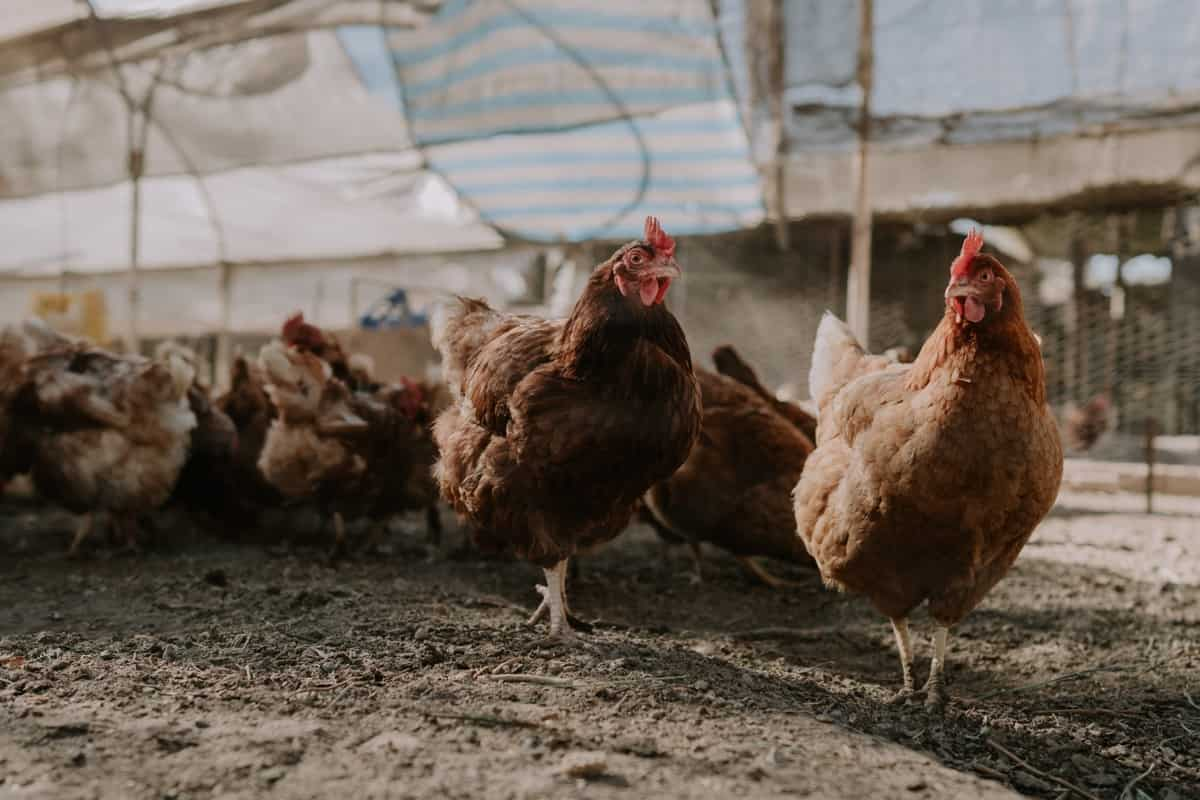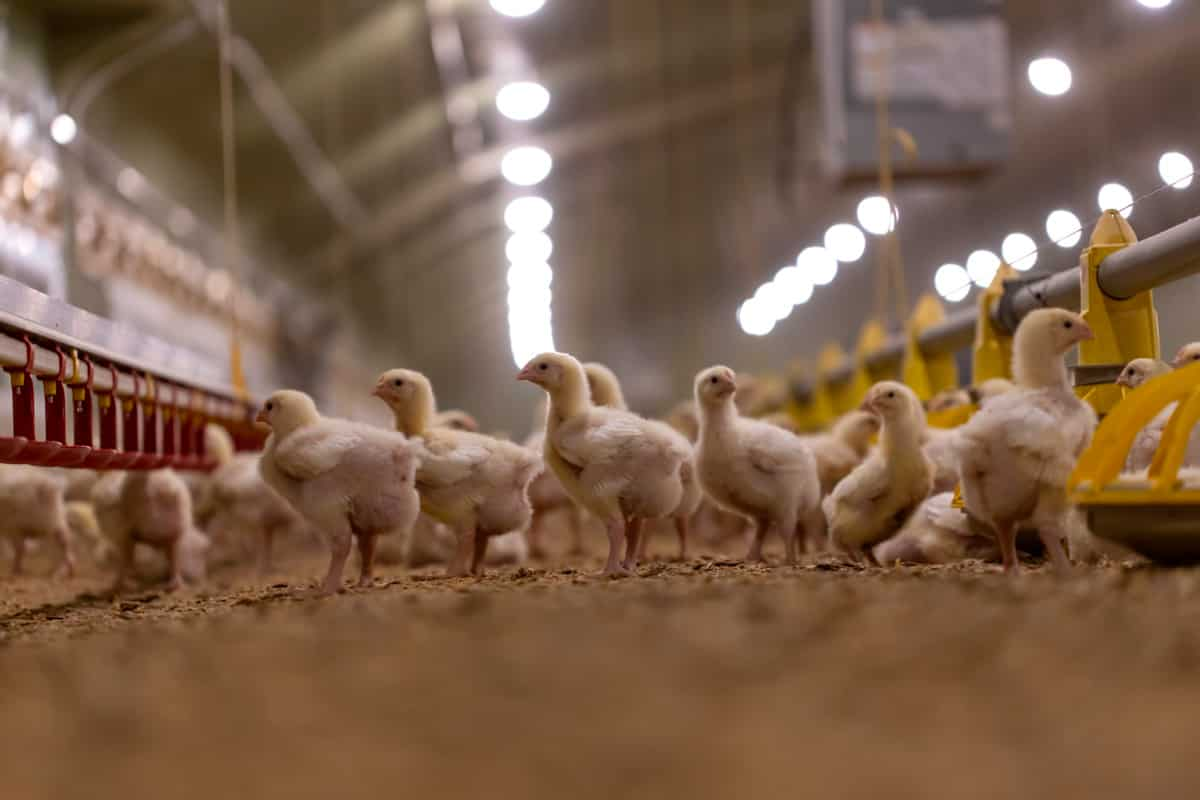Many people are considering entering the lucrative poultry farming industry. However, the quantity of room needed for the birds is a significant consideration when beginning a poultry farm. Poultry farms’ areas differ in their flock sizes. The health and development of the chickens, as well as their overall output, depend on enough room to roam. Below we learn poultry space requirements for 500, 1000, 5000, and 10,000 birds.

Space Required for Chicken Farming
Space Requirements for 500 Birds
For a chicken farming business with 500 birds, you would require approximately 1500 square feet of land. You will need to consider the brooder house, the grower house, and the laying house.
- Brooder House: The brooder house should be approximately 300 square feet and provide enough space for the birds to move around freely. The brooder house should be temperature controlled, and you should provide a heat source to keep the birds warm.
- Grower House: The grower house should be approximately 1000 square feet, providing space for the birds to grow. This area should be well-ventilated to ensure that the birds are comfortable.
- Laying House: The laying house should be approximately 200 square feet and provide space for the birds to lay eggs.
Space Requirement for 1000 Birds
For a chicken farming business with 1000 birds, you would require approximately 3000 square feet of land. You will need to consider the brooder house, the grower house, and the laying house.
- Brooder House: The house should be approximately 500 square feet and provide enough space for the birds to move around freely. The brooder house should be temperature controlled, and you should provide a heat source to keep the birds warm.
- Grower House: The grower house should be approximately 1500 square feet, providing space for the birds to grow. This area should be well-ventilated to ensure that the birds are comfortable.
- Laying House: The laying house should be approximately 1000 square feet and provide space for the birds to lay eggs. The laying house should be well-ventilated and have a nest box for the birds to lay their eggs.
Space Requirement for 5000 Birds
For a chicken farming business with 5000 birds, you would require approximately 15000 square feet of land. You will need to consider the brooder house, the grower house, and the laying house.
- Brooder House: The brooder house should be approximately 2000 square feet and provide enough space for the birds to move around freely. The brooder house should be temperature controlled, and you should provide a heat source to keep the birds warm.
- Grower House: The grower house should be approximately 7000 square feet, providing space for the birds to grow. This area should be well-ventilated to ensure that the birds are comfortable.
- Laying House: The laying house should be approximately 6000 square feet and provide space for the birds to lay eggs.
In case you missed it: Poultry Farm Shed Design and Size: for 1000, 5000, 10,000 Birds

Space Requirements for 10,000 Birds
For a poultry farm of 10000 birds, an area of 200,000 sq ft is considered adequate. The space can be divided into three main areas: the brooding area, the growing area, and the laying area. The brooding area should be around 8 sq ft per bird, and the temperature should be around 95°F. The growing area is where the birds are kept until they mature. In this area, the chickens should have access to feed and water, and the space should be around 4 sq ft per bird. The laying area is where the chickens lay their eggs, which should be around 3 sq ft per bird.
How Much Space is Required for Chicken Farming?
The space required for chicken farming in India depends on the number of birds to be raised and the type of poultry farming. For a small-scale poultry farm with 500 birds, a minimum of 500 square meters of space is required. This space should include a chicken house, feed and water storage area, and a waste management system.
The chicken house should be well-ventilated, well-lit, and have proper temperature control to ensure the health and well-being of the birds. The space requirement for larger-scale poultry farms with more than 1000 birds increases accordingly. For example, for a farm with 5000 birds, a minimum of 5000 square meters of space is required; for a farm with 10,000 birds, a minimum of 10,000 square meters of space is required.
In addition to the space requirements, the poultry farm should have adequate infrastructure, such as feed and water storage systems, waste management systems, and temperature control and ventilation equipment. The poultry farm should also have a team of experienced and knowledgeable personnel to manage the birds and ensure their health and well-being.
How Many Broiler Chickens per Square Meter?
The number of broiler chickens per square meter in poultry farming depends on several factors, including the age of the birds, the type of housing system used, and the overall management of the facility. Generally, it is recommended to have a space of around 0.15 to 0.2 square meters per bird for the first six weeks of life and 0.25 to 0.3 square meters per bird for the remaining life of the bird.
In case you missed it: Free Range Chicken Farming Business Plan: Step-by-Step to Start, Setup Cost, and Requirements

However, these recommendations may vary depending on the birds’ specific needs and the facility’s conditions. Providing adequate space for the birds to move freely and reduce stress is important, as this can affect their growth and health. A well-planned and well-executed poultry farming operation with appropriate space per bird is key to the success and profitability of the business.
Conclusion
In addition to the space requirement, other factors such as ventilation, lighting, temperature control, and waste management also play a crucial role in the success of chicken farming. Good ventilation helps to keep the birds healthy and prevents the spread of diseases.
Adequate lighting is essential to ensure the proper growth and development of the birds, while temperature control helps to maintain a comfortable environment for the birds. Waste management is important to maintain a hygienic environment and reduce disease transmission risk.
- Feed Your Flock for Less: Top 10 Tips to Save on Chicken Feed
- Ultimate Guide to Ossabaw Island Hog: Breeding, Raising, Diet, and Care
- Hatching Answers: The Top 10 Reasons Your Chickens Aren’t Laying Eggs
- Eggs and Economics: Breaking Down the Cost of Raising Backyard Chickens
- Defend Your Greens: Proven Methods to Keep Iguanas Out of Your Garden
- Ultimate Guide to Cinnamon Queen Chicken: A Comprehensive Guide for Beginners
- Ultimate Guide to California Tan Chicken: Breeding, Raising, Diet, Egg-Production and Care
- Ultimate Guide to Marsh Daisy Chicken: Breeding, Raising, Diet, and Care
- 10 Types of Chicken Farming Businesses You Can Start for Profits
I have 30000 square feet Poultry shed in Nagpur